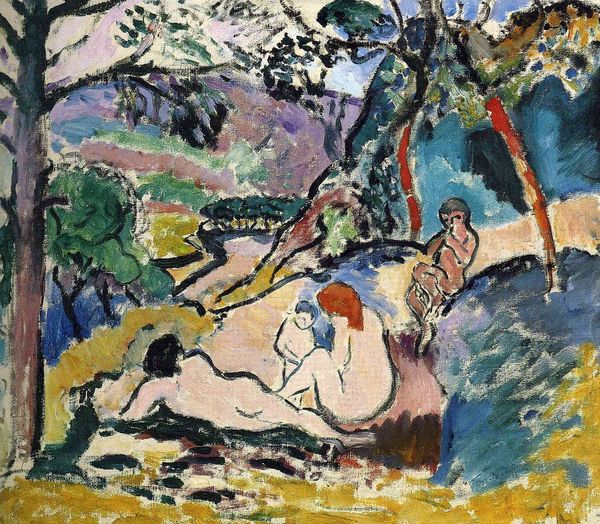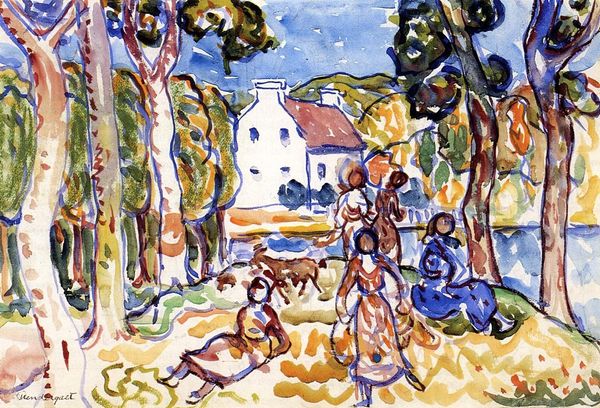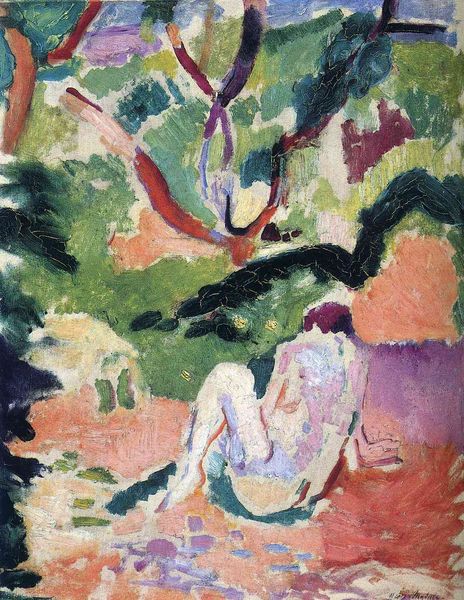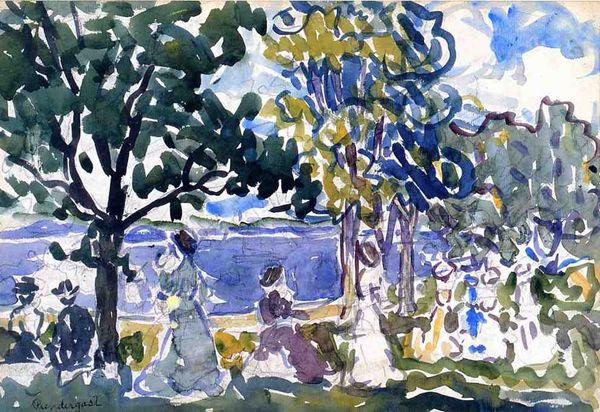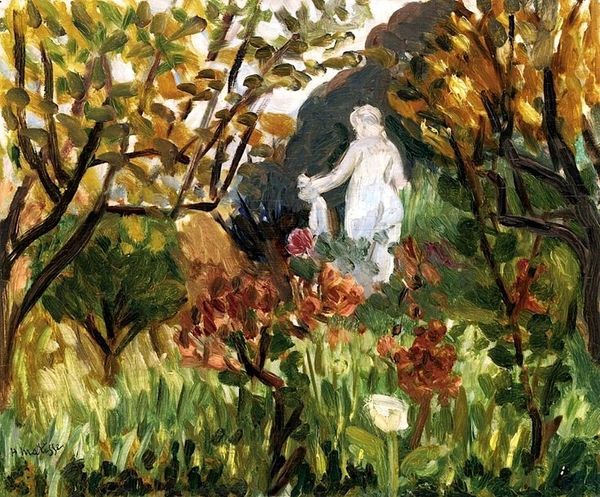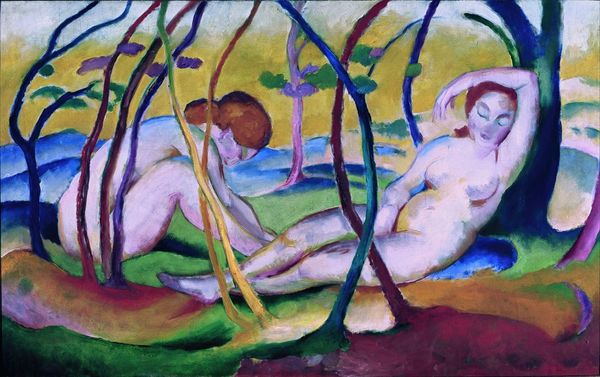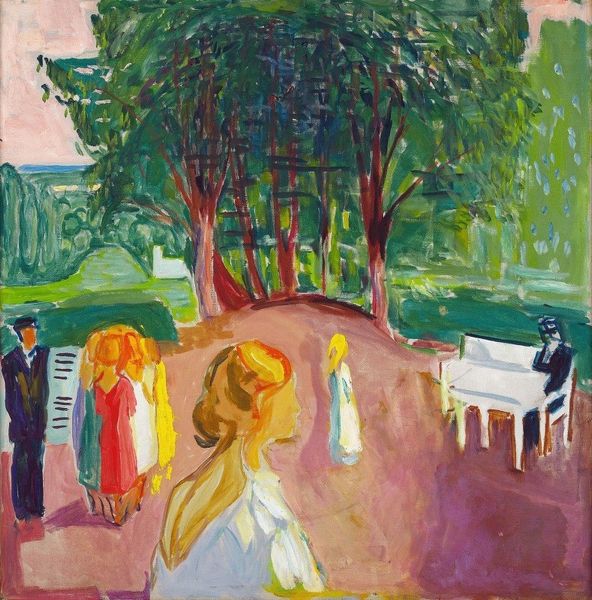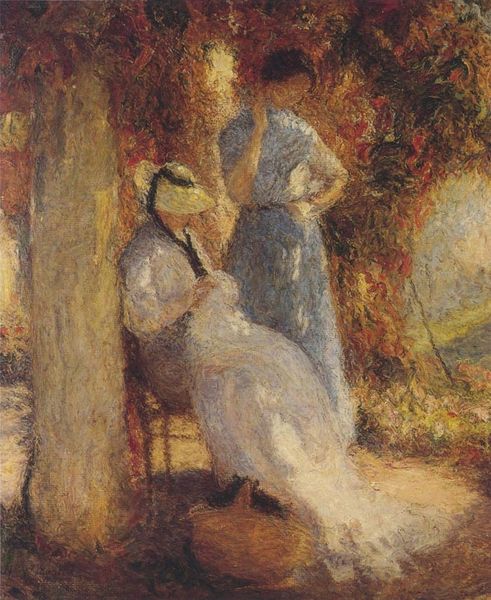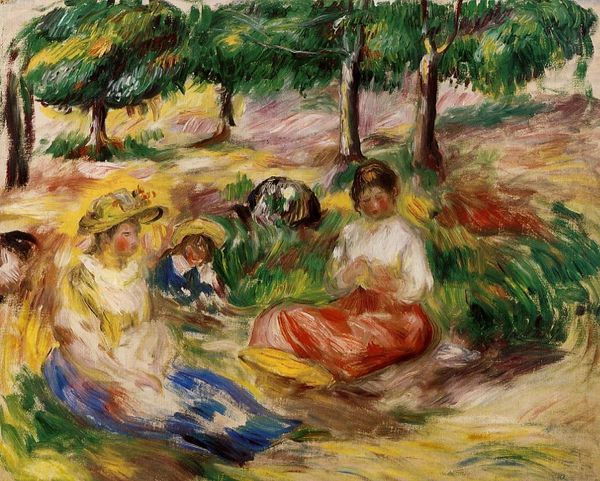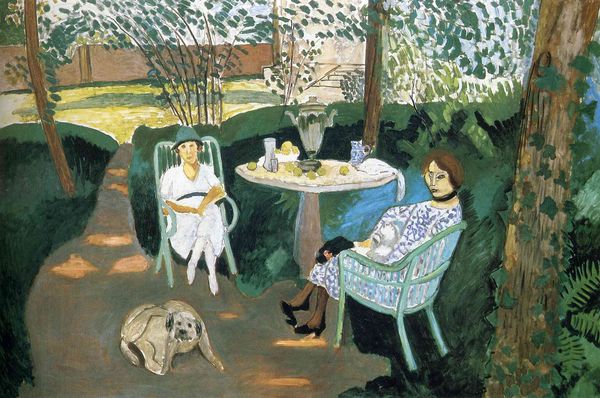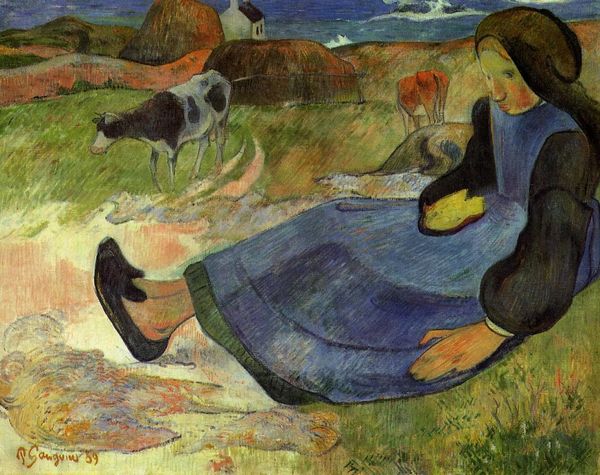
Two Figures Reclining in a Landscape 1921
0:00
0:00
henrimatisse
Barnes Foundation, Philadelphia, PA, US
Copyright: Public domain US
Editor: Henri Matisse's "Two Figures Reclining in a Landscape," from 1921, is an oil painting currently at the Barnes Foundation. The composition feels very flat and decorative, like a tapestry almost. The brushstrokes are visible and build up a sense of depth, but in a very simplified way. What do you see in this piece from a formalist perspective? Curator: From a formalist reading, one observes the arrangement of the compositional elements. Note the interplay between the horizontal figures and the vertical trees. This contrast structures the scene, dividing it into planes of existence. Editor: Planes of existence? Curator: Metaphorically. There’s a plane of activity—the reclining figures, painted with simplified forms, bordering on naive—and one of observation—the more densely rendered landscape. Do you notice the limited color palette? Editor: Yes, the painting mainly uses greens, reds and blues. It gives a rather limited effect and overall balance. Curator: Exactly. It creates a deliberate unity and impacts how one perceives space and depth. It draws attention to the constructed nature of the painting. What semiotic meaning might we extract from this artifice? Editor: Maybe it calls attention to the painting as an object itself, rather than trying to mimic reality. It's a world created through color and shape? Curator: Precisely. The essence of painting then lies not in replication, but in the act of creation itself, through a formal dialogue of line, color, and composition. A departure from realism, focusing on inherent aesthetics. Editor: So it's less about what the painting shows and more about how it shows it. Thank you for your insightful perspective. Curator: It underlines how much meaning is encoded in those formal choices. Always a learning opportunity.
Comments
No comments
Be the first to comment and join the conversation on the ultimate creative platform.
